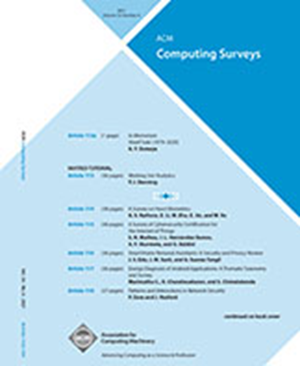基于机器学习的网络安全任务的源代码表示综述
IF 28
1区 计算机科学
Q1 COMPUTER SCIENCE, THEORY & METHODS
引用次数: 0
摘要
用于网络安全相关软件工程任务的机器学习技术正变得越来越流行。源代码的表示是该技术的关键部分,它会影响模型学习源代码特性的方式。随着越来越多的此类技术被开发出来,了解该领域的当前状态以更好地了解哪些技术已经存在,哪些技术还不存在是很有价值的。本文对这些现有的基于机器学习的方法进行了研究,并展示了用于不同网络安全任务和编程语言的表示类型。此外,我们研究了什么类型的模型用于不同的表示。我们发现基于图的表示是最受欢迎的表示类别,Tokenizers和Abstract Syntax Trees (AST)是两种最受欢迎的表示(例如,AST和Tokenizers是论文数量最多的表示,而基于图的表示是论文数量最多的类别)。我们还发现,最受欢迎的网络安全任务是漏洞检测,而大多数技术涵盖的语言是c语言。最后,我们发现基于序列的模型是最受欢迎的模型类别,支持向量机(svm)是最受欢迎的模型。本文章由计算机程序翻译,如有差异,请以英文原文为准。
A Survey of Source Code Representations for Machine Learning-Based Cybersecurity Tasks
Machine learning techniques for cybersecurity-related software engineering tasks are becoming increasingly popular. The representation of source code is a key portion of the technique that can impact the way the model is able to learn the features of the source code. With an increasing number of these techniques being developed, it is valuable to see the current state of the field to better understand what exists and what’s not there yet. This paper presents a study of these existing ML-based approaches and demonstrates what type of representations were used for different cybersecurity tasks and programming languages. Additionally, we study what types of models are used with different representations. We have found that graph-based representations are the most popular category of representation, and Tokenizers and Abstract Syntax Trees (ASTs) are the two most popular representations overall ( e.g. , AST and Tokenizers are the representations with the highest count of papers, while graph-based representations is the category with the highest count of papers). We also found that the most popular cybersecurity task is vulnerability detection, and the language that is covered by the most techniques is C. Finally, we found that sequence-based models are the most popular category of models, and Support Vector Machines (SVMs) are the most popular model overall.
求助全文
通过发布文献求助,成功后即可免费获取论文全文。
去求助
来源期刊

ACM Computing Surveys
工程技术-计算机:理论方法
CiteScore
33.20
自引率
0.60%
发文量
372
审稿时长
12 months
期刊介绍:
ACM Computing Surveys is an academic journal that focuses on publishing surveys and tutorials on various areas of computing research and practice. The journal aims to provide comprehensive and easily understandable articles that guide readers through the literature and help them understand topics outside their specialties. In terms of impact, CSUR has a high reputation with a 2022 Impact Factor of 16.6. It is ranked 3rd out of 111 journals in the field of Computer Science Theory & Methods.
ACM Computing Surveys is indexed and abstracted in various services, including AI2 Semantic Scholar, Baidu, Clarivate/ISI: JCR, CNKI, DeepDyve, DTU, EBSCO: EDS/HOST, and IET Inspec, among others.
 求助内容:
求助内容: 应助结果提醒方式:
应助结果提醒方式:


